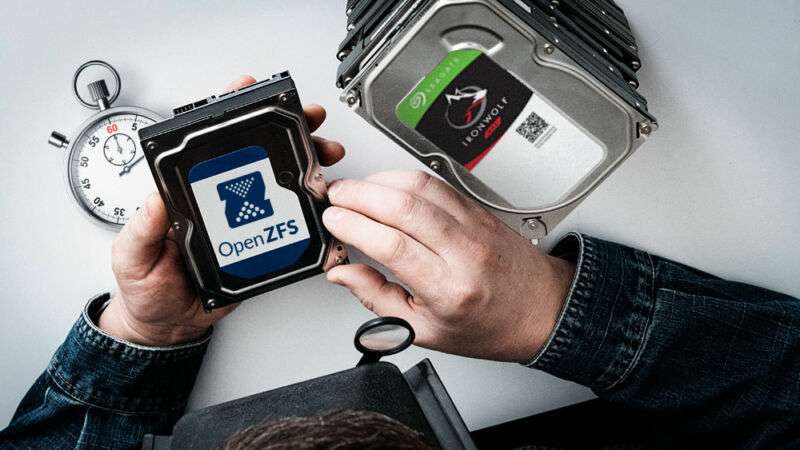
ZFS versus RAID: Eight Ironwolf disks, two filesystems, one winner
We exhaustively tested ZFS and RAID performance on our Storage Hot Rod server. …

reader comments
212 with 97 posters participating, including story author
View more stories
This has been a long while in the making—it’s test results time. To truly understand the fundamentals of computer storage, it’s important to explore the impact of various conventional RAID (Redundant Array of Inexpensive Disks) topologies on performance. It’s also important to understand what ZFS is and how it works. But at some point, people (particularly computer enthusiasts on the Internet) want numbers.
First, a quick note: This testing, naturally, builds on those fundamentals. We’re going to draw heavily on lessons learned as we explore ZFS topologies here. If you aren’t yet entirely solid on the difference between pools and vdevs or what ashift and recordsize mean, we strongly recommend you revisit those explainers before diving into testing and results.
And although everybody loves to see raw numbers, we urge an additional focus on how these figures relate to one another. All of our charts relate the performance of ZFS pool topologies at sizes from two to eight disks to the performance of a single disk. If you change the model of disk, your raw numbers will change accordingly—but for the most part, their relation to a single disk’s performance will not.
Equipment as tested
- <li data-thumb="https://cdn.arstechnica.net/wp-content/uploads/2020/03/rack-full-150×150.jpg" data-src="https://cdn.arstechnica.net/wp-content/uploads/2020/03/rack-full.jpg" data-responsive="https://cdn.arstechnica.net/wp-content/uploads/2020/03/rack-full.jpg 1080, https://cdn.arstechnica.net/wp-content/uploads/2020/03/rack-full.jpg
Continue reading – Article source




